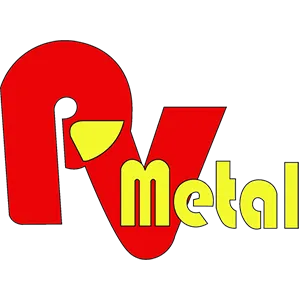Welding is a versatile process used to join metals and alloys in various industries. Understanding which materials can be successfully welded together is essential for creating strong, reliable structures and components. While many metals and alloys can be welded together effectively, some combinations are more challenging or unsuitable for direct welding.
When working with welding projects, customers often present designs that may include materials that are not ideal for direct welding. While their ideas may be innovative and well-intentioned, the practical aspects of welding these materials together can pose significant challenges. As experts in the field, it’s our role to guide customers through these complexities and suggest practical solutions to ensure that the final product meets both design and functional requirements.
Here’s a guide to which materials are suitable for welding together and which are not.
Materials That Are Suitable to Weld Together
-
Carbon Steel and Mild Steel
- Overview: Carbon steel and mild steel are often welded together with ease due to their similar chemical compositions and melting points.
- Welding Methods: MIG (Metal Inert Gas) welding, TIG (Tungsten Inert Gas) welding, and Stick welding are commonly used.
- Applications: Structural components, pipelines, and general fabrication.
-
Stainless Steel and Stainless Steel
- Overview: Stainless steels, with their high corrosion resistance and similar alloying elements, are highly compatible for welding.
- Welding Methods: TIG and MIG welding are typically used, with fillers that match the stainless steel's composition.
- Applications: Food processing equipment, medical devices, and architectural features.
-
Aluminum and Aluminum
- Overview: Aluminum can be welded with itself using specialized techniques due to its relatively low melting point and unique properties.
- Welding Methods: TIG and MIG welding are effective, with special consideration given to the aluminum oxide layer.
- Applications: Aerospace components, automotive parts, and lightweight structures.
-
Mild Steel and Low Alloy Steel
- Overview: Mild steel and low alloy steels can be welded together effectively because they have similar thermal properties and weldability.
- Welding Methods: MIG, TIG, and Stick welding.
- Applications: Bridges, vehicles, and machinery.
-
Copper and Copper Alloys
- Overview: Copper and its alloys, such as bronze and brass, can be welded together using techniques suited to their thermal and electrical conductivity.
- Welding Methods: TIG and MIG welding, along with specialized processes like brazing.
- Applications: Electrical components, plumbing fittings, and decorative items.
Materials That Are Not Suitable to Weld Together
-
Aluminum and Stainless Steel
- Overview: Welding aluminum to stainless steel is challenging due to their significantly different melting points and thermal expansion properties.
- Challenges: Direct welding can lead to weak joints and issues with corrosion resistance.
- Alternative Methods: Mechanical fastening or adhesive bonding is often used, or specialized welding techniques like friction stir welding.
-
Cast Iron and Steel
- Overview: Cast iron and steel have different chemical compositions and thermal expansion rates, making direct welding problematic.
- Challenges: Cast iron is brittle and prone to cracking; welding requires careful heat control and pre/post-heating.
- Alternative Methods: Brazing or welding with specialized rods designed for cast iron.
-
Galvanized Steel and Other Metals
- Overview: Galvanized steel has a zinc coating that can produce harmful fumes and affect weld quality.
- Challenges: The zinc coating can cause porosity and weak welds.
- Alternative Methods: Removing the coating from the weld area or using other joining methods.
-
High Carbon Steel and Low Carbon Steel
- Overview: High carbon steel and low carbon steel have different hardness and ductility, which can lead to issues during welding.
- Challenges: High carbon steel is more prone to cracking and requires careful heat management.
- Alternative Methods: Pre-heating and using appropriate filler materials can help, but these steels often need special techniques.
-
Dissimilar Metals with Vast Differences in Properties
- Overview: Metals with vastly different melting points, thermal expansion rates, or chemical compositions (e.g., titanium and steel) are generally unsuitable for direct welding.
- Challenges: Significant differences can lead to weak joints, cracking, or poor fusion.
- Alternative Methods: Specialized processes or hybrid materials may be required, such as using transition materials or hybrid joining techniques.
Choosing the right materials for welding is crucial for ensuring strong, durable, and reliable joints. While many combinations of metals can be successfully welded together, some require special techniques or alternative methods due to differences in their properties. Understanding these compatibilities helps in achieving the best results in welding projects, whether in construction, manufacturing, or repair.

 Indonesia
Indonesia